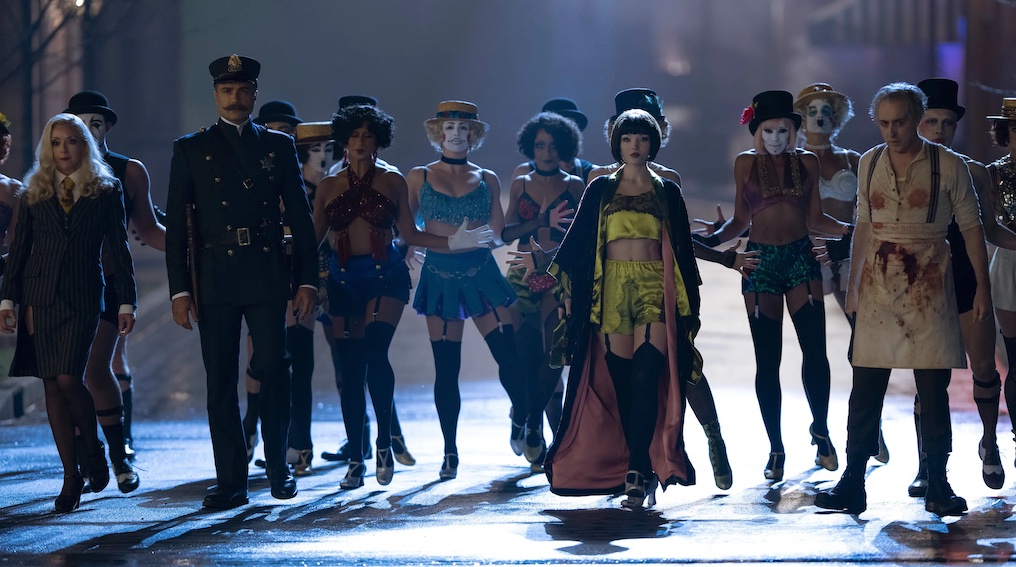
Jon Joffin can see the light, and the darkness, as well as the grays in between, and he knows how to shoot them. So much so that in the course of his 37-year-long career he’s risen through the ranks from Focus Puller to Cinematographer, served as DP on more than 60 films and television shows, and just earned his second Emmy Award nomination. For his work on the “Something Real” episode of the Apple+ comedy-musical show Schmigadoon!, he’s up for a statuette in the Outstanding Cinematography for a Series (Half-Hour) category.
Born in South Africa, Joffin’s family didn’t even own a TV until his early teens. Soon after a move to Canada, he saw Apocalypse Now and experienced his “A-ha” moment. He went on to amass credits that span from Freakshow, Bulletproof Heart, The X-Files, and The Andromeda Strain (his first Emmy nom) to Titans, Motherland: Fort Salem, Big Sky, and the just-concluded third season of Star Trek: Picard. Below the Line recently spoke via Zoom with the high-energy Joffin, who is based in Canada, about the early days of his career, his philosophy about lighting, how he almost passed on Schmigadoon!, and more.
Below the Line: Growing up in South Africa, what shows and movies did you have access to?
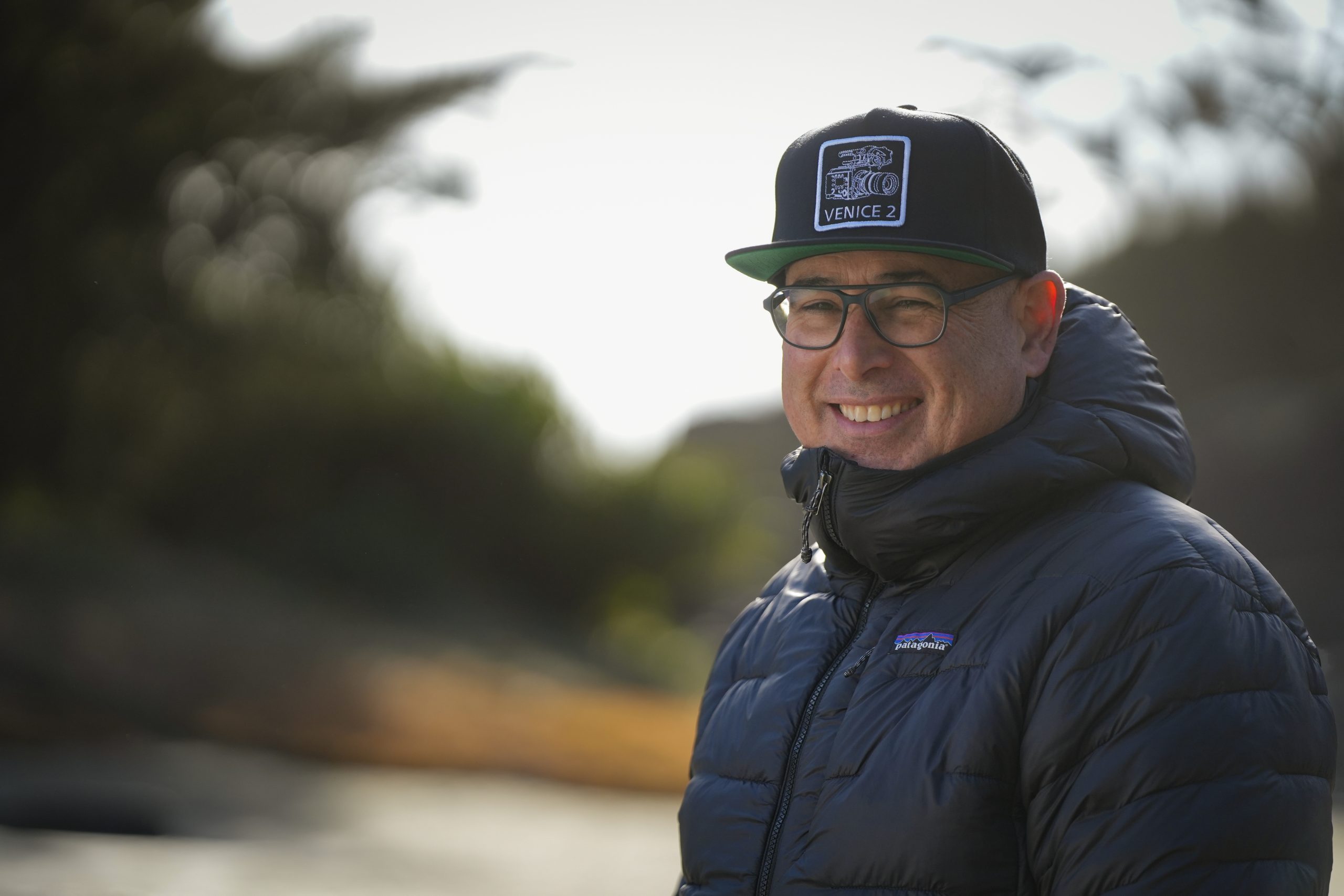
Jon Joffin: That’s an interesting story, because when we were growing up, we didn’t have TV until I was 13. At 13, TV came to South Africa. We didn’t have a TV, but my dad had a Bell & Howell projector. Instead of video rental stores, they had these film rental stores and we’d go rent reels of 16-millimeter films. There’d be a lot of American TV shows, like The Saint, The Persuaders, Love Boat, Starsky & Hutch, all that classic stuff. We’d watch those – and movies, too – in our house, usually on the weekend. Our friends would come over and we’d have a big screening.
BTL: It’s not like you experienced those shows or movies in Cinerama. Where and when did the feeling that, “Wow, this is what I want to do” come to you?
Joffin: At 13, I still didn’t have the bug, the understanding, or desire to make films, but what I was big into was photography. My dad was a photographer, so he taught me photography. I started with film from an early age. I learned how to work in the darkroom. My dad had huge collections of cool photo books. He had that Time-Life series that I loved. He had this German magazine called Camera, which was pretty racy at the time, because it involved nude portraits. He had that and all his Life magazines. I was exposed to photography. I got a love for photography, that’s for sure.
BTL: How did that lead you to film?
Joffin: We moved to Toronto, Canada, when I was 14, and I started watching TV. All the channels. When TV started in South Africa, it would be three hours a night. One night would be in English, and the next night in Afrikaans. They had the news once a week, but it wasn’t exactly live current news. It was interesting coming and seeing what TV was like, but I didn’t understand or realize what I wanted to do until I was 16 or 17, when I saw Apocalypse Now. That just blew me away. It wasn’t just a movie, it was art. It made me feel all these emotions. That was a turning point for me. I knew I wanted to make films.
BTL: You spent most of your teens in Canada and got your first exposure to the industry there, right?
Joffin: I knew I had this love and wanted to make films. I went to York University to study film. I never completed the program, but I was exposed to a lot of experimental films and met a lot of interesting people. I was definitely drawn to shooting and cinematography. When I was in my second year, I was shooting third- and fourth-year movies. I was just shooting nonstop. I didn’t finish; I did three years out of the four-year program. I was hungry to get out there and make movies. What I’d say to anyone starting out is, “Really enjoy that time because you can make the movies you want. You can do whatever you want. You don’t have a committee telling you how you should make it.”
I started doing a bunch of low-budget music videos and smaller things. Then I decided I wanted to see how bigger productions work, so I worked my way up to a Second Assistant Focus Puller. I worked on better projects and movies. That was a great job because it got me in the inner circle with the Director and the DP, so I could see how it all worked. I did that for a while. I was a Focus Puller. I had done a few films as an Operator — I didn’t do that many — but I had this good fortune. I went out for a day call on The X-Files. It was the second or third season, early on. I lucked out. I started shooting with the insert unit, which was full-time, and that became the second unit. On the second unit, we were doing all the crazy stuff. We were blowing up trains, we were in submarines, and we were doing all the action. That’s what got me going, and that was my first real break.
BTL: What’s your philosophy about lighting? Is it a friend to work with, a beast to tame, or something in between?
Joffin: Oh, it’s definitely a friend to work with. I love light, and I love lighting. I love the power of lighting. I love what you can do with or without lighting, or taking lighting away. I like the way you can use it to create a mood and an emotion. That’s the thing that appeals to me in service of telling the story. I will say, when you’re shooting a long sequence — you’re outside for days and the sun’s changing all day — it can be a bit of a beast, but you learn how to deal with it. You do. The more you shoot, the more you learn. I’m learning every day. Every day is a new lesson.
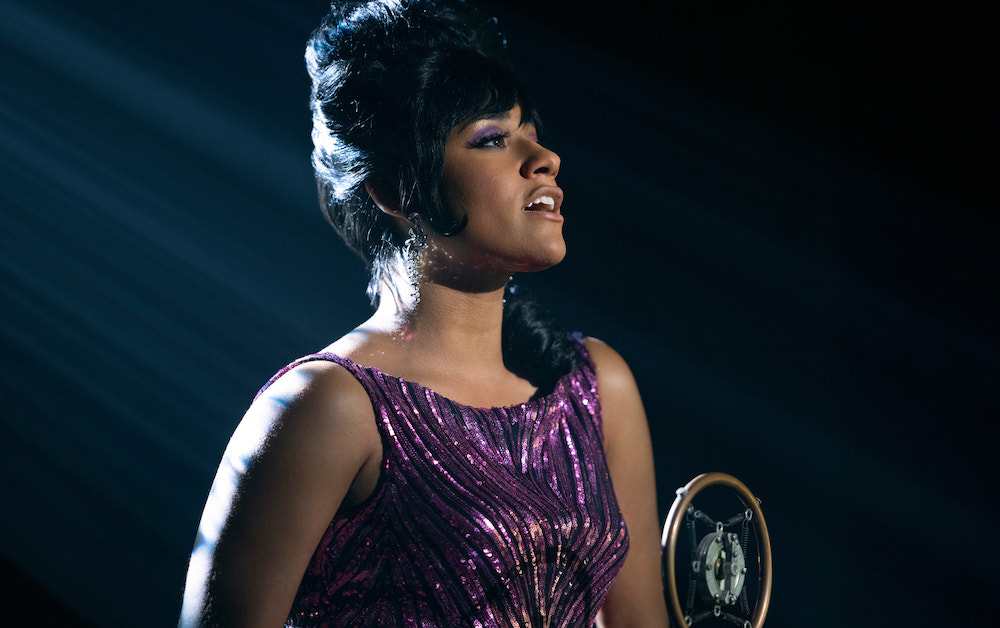
BTL: You’ve done several sci-fi/fantasy/horror shows and movies. Did genre projects find you, do you have an affinity for them and seek them out, or both?
Joffin: A little bit of both. They see you’ve done dark, moody work and they want to use you. I was based in Vancouver, and there was a time in Vancouver when all the dark, scary projects and sci-fi projects were there, so I did those a lot. I loved that. I did that for a while, but then I found this love I didn’t know that I had for musicals. That’s somewhere where I’ve come to, and I will never say no now to a musical.
BTL: What was the first musical you shot?
Joffin: The first thing I did was a series of American Girl movies. It’s based on the American Girl doll. They didn’t do advertising. Instead of commercials and advertising for these dolls, they would make a feature-length movie, and there was always some musical component to them. That’s where I got my first taste. I also did this Netflix show called Julie and the Phantoms with the legendary Kenny Ortega. That was quite something, but nothing like Schmigadoon.
BTL Let’s talk Schmigadoon. How did that come along? And my understanding is you weren’t sure you wanted to do it because season one was, visually, so light and cheery…
Joffin: My agent called and said that they were interested, and that they were looking for DPs and meeting people, and they wanted to meet with me. I was coming off Picard, the final season. I was like, “I saw the show. I think it’s great and I love the music, but it’s not the look I want to do. I get what they’re doing, but it’s not for me.” He said, “Take the meeting.” He always says, “Always take the meeting, because maybe later they’ll have another project you’re interested in. You will have met them, and made a connection.” I went to the meeting, I read the scripts, I started looking at it, and I thought this could be a little bit different because it had more of an edge to it.
When I met with them, they started showing me the art department boards, the costumes, and all this stuff. A third of the way into the meeting, I was like, “I want to do this show,” because they wanted it to be like Cabaret, Chicago, or Umbrellas of Cherbourg. It’s a comedy, so they wanted a light version of dark and moody. That’s always a fine line to walk, but I was totally in. I really wanted to do the show and, luckily, they offered it to me. Cinco Paul, he’s a god and a genius.
He’s one of the most brilliant showrunners/writers/creators I’ve ever seen. He writes all the music and lyrics. He did Minions and Despicable Me. He’s amazing, and so different from anyone else. He has such a good sense of humor coming from that. The first season was the first live-action show he did. So, he brings a very particular style. He knows exactly what he wants.
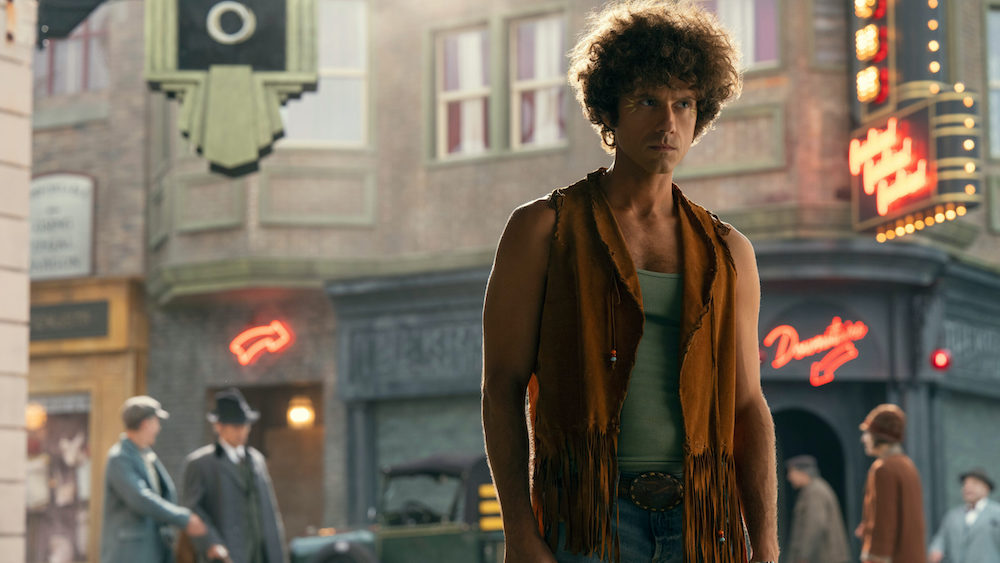
BTL: In terms of Cinco knowing what he wants, can you share an example?
Joffin: We did a scene where they’re in a restaurant, and it’s Alan Cumming, Kristen Chenoweth, Cecily Strong, and Keegan-Michael Key. They’re all at this meal. They’re trying to set up Kristen and Alan, trying to make them become a couple. Cinco came to us the day before and he goes, “The way we have imagined this, I would like it to be one shot.” It was a long scene. I don’t remember how many pages, but it was a substantial scene. We started thinking, “Well, what are we going to do? Are we going to move around the table? We’ll make some kind of interesting movement. How do we make this one shot?” He said, “No, I just want a static shot. I want to see everyone in the frame.” We were like, “Okay.” He was so right, because the shot played beautifully. You saw the two of them in the foreground doing their acting. You saw Cecily and Keegan looking towards them. It was just perfect.
It’s totally a thing that you would see in an animated movie, but he knew exactly what he wanted. He knew. It’s great working for people like that who know exactly what they want, because then you can do your job better. You can say, “Okay, this is what we’re going to do. What can I do? How can I light it to accentuate it? What else can I offer you?” With the music and the performances, he and the Choreographer, Chris Gattelli — who’s amazing too — they showed me a preview of the first number we did. It was shot on the iPhone and I thought it was just a reference, but it wasn’t. It was exactly the way they wanted to shoot it. They knew exactly what they wanted, so that part was cool.
BTL: You used the Sony Venice 2 camera and Zeiss Prime Radiance lenses. Why’d you choose them? How did they play out for you practically?
Joffin: Cinco said to me, in terms of the reference for the look, that he wanted to do a three-strip Technicolor look. That was the most important thing to him. It’s not totally the right time period, but that’s the look he wanted. I didn’t know a lot about it, honestly, so I went and did a bunch of research. Michael Pessah, ASC — who’s an amazing film historian — he dialed me in. I spoke to David Mullen, who’s a great film historian, too. They gave me lots of good information and told me how the process works. David gave me some great advice. He said, “Technicolor is a term that everyone has a different idea of how it looks. Make sure you have reference movies. Who you’re creating this look for, show them the reference movies and make sure they’re on board, that it’s the Technicolor look that they want.” We set about doing it. Technicolor, it’s basically four different film strips. It’s all black and white. They go through three different colored filters. There’s the last one that does very deep blacks, but they’re very separate colors. It’s not about them being saturated, it’s about them being separate in color.
(Colorist) Jill Bogdanowicz, she talked about “colors staying in their lanes.” That’s a good way of talking about it. It’s not just saturation; each color is very discreet. We worked on building that look with her and then we figured out how to apply it to our lighting, because for color information you need a lot of light. I’m getting technical, but basically, in the early days for black-and-white films to go through those colored filters, you needed an awful lot of light to expose it. The earlier Technicolor films were very bright and flat because they had to blast hard light to get enough exposure. I took Cinco’s look, the Technical look he wanted, but I tried to figure out, “How could I do this Technicolor look, but at the same time contrast with more of a soft light?” I gave him the world he wanted, but I put a modern twist to it. It worked fairly well.
BTL: Which led to your camera and lens choices…
Joffin: With the camera, because we were doing this heavy color, dependent look, the camera has such a big color space. The colors are so fantastic on it. That was incredible for us. We tested all kinds of vintage lenses, but we settled on Radiance lenses because they shoot them wide open. They have a vintage-esque feel, but they’re very reliable, so I knew that that would play into this dark look that they wanted that was maybe a little safer. Lorne Michaels had told Cinco, “The show cannot be too dark. It’s a comedy.” Having the reliability of those lenses was great. I love the Radiance lenses. Combined with the fantasy, it was the perfect combination.
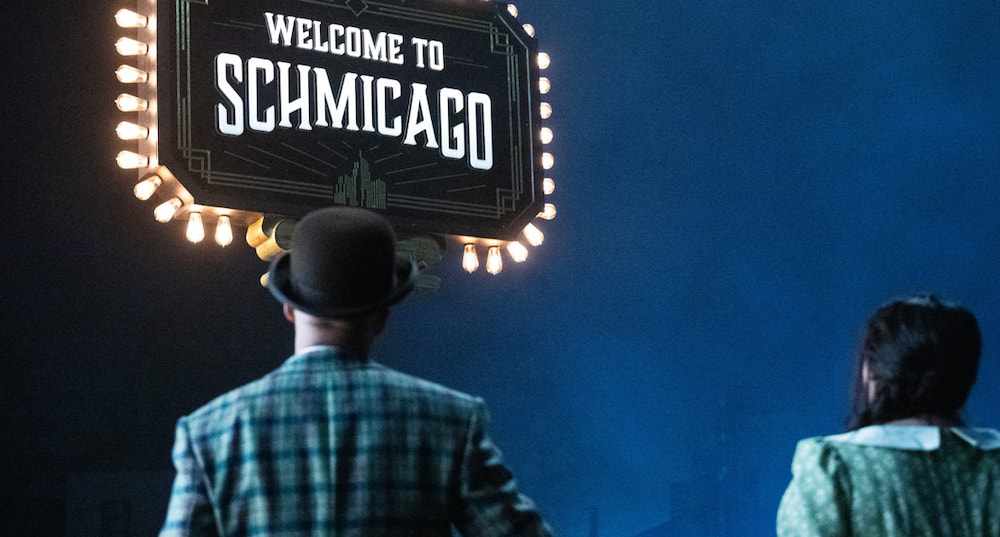
BTL: No DP can do the job alone. Feel free to give your team a shout-out…
Joffin: I could not have done the job without the entire crew, which is at least 100 people on any given day, but there are some very standout people that I worked closely with. Jill Bogdanowicz, my Colorist, we worked together well. Gaffer Todd Lapp is a brilliant genius and collaborator. Having someone who is like-minded, that you can bounce ideas off of all day, who’s supportive, totally committed and into it, was major. Camera Operator Jos Oman was fantastic to work with. He gets what I want. He’s great at communicating with the actors and working within the lighting, which is always tricky because the camera can always point where you don’t want it to, but he never does.
Also, my DIT David Skidmore, and Ryan McGregor, who filled in when David was sick. We had a lot of COVID on the show, so I was out for a few days too. It was such a great crew. Everyone… people like Chris Gattelli, Cinco, Jamie (Walker McCall), the Production Designer, and Angus (Strathie), who did the costumes. I feel like I’m cheating when I’m on a show with people who are that good and at the top of their game, because I just come in and put some light on.
BTL: How did you get the news about your second Emmy nomination?
Joffin: I had a call from my agent, which was exciting. My last Emmy nomination was 14 years ago. So, that’s pretty amazing.
BTL: Did you complete anything else anything else before the strikes kicked in, or are Schmigadoon! and Picard the two most recent projects?
Joffin: They are, but I did a little personal love project that I want to tell you about. It was supported by Sony Venice. It was done to promote the Sony Venice Rialto. It’s a three-minute film I wrote, directed, and shot. It’s on Sony’s Cine website and it’s also on YouTube. It’s called At Home. We did some very cool stuff. It’s a love story between two real people. It was based on a song I found. The singer had written this song for his wife. I went to them and I said, “What are all the memories of your life?” They started telling me and one of the things they remembered that they loved was skydiving. We actually went skydiving with a full production in Venice. We had a skydiver’s belly cable attached to his arm holding a Rialto. We’ve got these pretty cool shots of skydiving. It’s just one part of it, but it’s a little love story. I got invited to the LA Shorts International Film Festival (where At Home will screen on July 22). That’s going to be fun.
Schmigadoon! and Star Trek: Picard stream on Apple+ and Paramount+, respectively.





